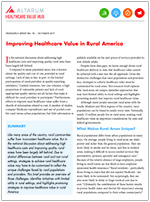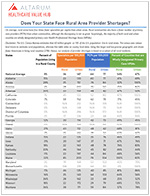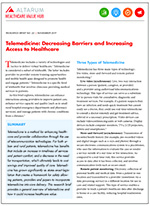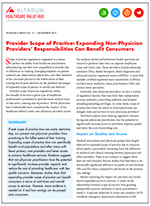Improving Value
Improving Healthcare Value in Rural America
In the national discussion about addressing high healthcare costs and improving quality, rural areas have been largely left behind. Although many people associate rural areas with the South, Midwest and West regions of the country, rural populations can be found in nearly every state. Nationally, approximately 60 million people live in rural areas, making rural healthcare value an important consideration for state and federal policy makers.
Compared to more populated areas, less is known about the quality and cost of care provided in rural settings. Lack of data is due, in part, to the limited participation of rural providers in quality reporting initiatives. Limited resources, low case volumes, a high proportion of vulnerable patients and lack of rural-appropriate quality metrics are all factors that make it difficult for rural providers to participate. Furthermore, efforts to improve rural healthcare value suffer from a dearth of information related to cost. A number of studies compare Medicare expenditures and out-of-pocket costs for rural versus urban populations, but little information is publicly available on the unit prices of services provided to non-elderly adults.
Despite these data gaps, we know enough about rural healthcare delivery to state that healthcare value cannot be achieved with a one-size-fits-all approach. Given the distinctive challenges that rural populations and providers face, strategies to achieve healthcare value must be customized for rural areas.
For more on rural health see the resources on this page, including Research Brief No. 19, Improving Healthcare Value in Rural America, along with a Hub webinar on this topic. In addition, we have reports on the related topics of Telemedicine, Provider Scope of Practice and State Provider Shortages.
- USDA Economic Research Service: The Nature of the Rural-Urban Mortality Gap
- Health Affairs: Missing Voices in America's Rural Health Narrative
- Johns Hopkins/State Health and Value Strategies - Global Budgeting for Rural Hospitals webinar
- RWJF - What Works? Strategies to Improve Rural Health
- RWJF - In Rural America, Community-Driven Solutions Improve Health
- Am I Rural? - Tool from the Rural Health Information Hub
- Census Bureau - Measuring America: Our Changing Landscape
- The Commonwealth Fund - New Study: U.S. Has Greatest Urban-Rural Health Disparities










